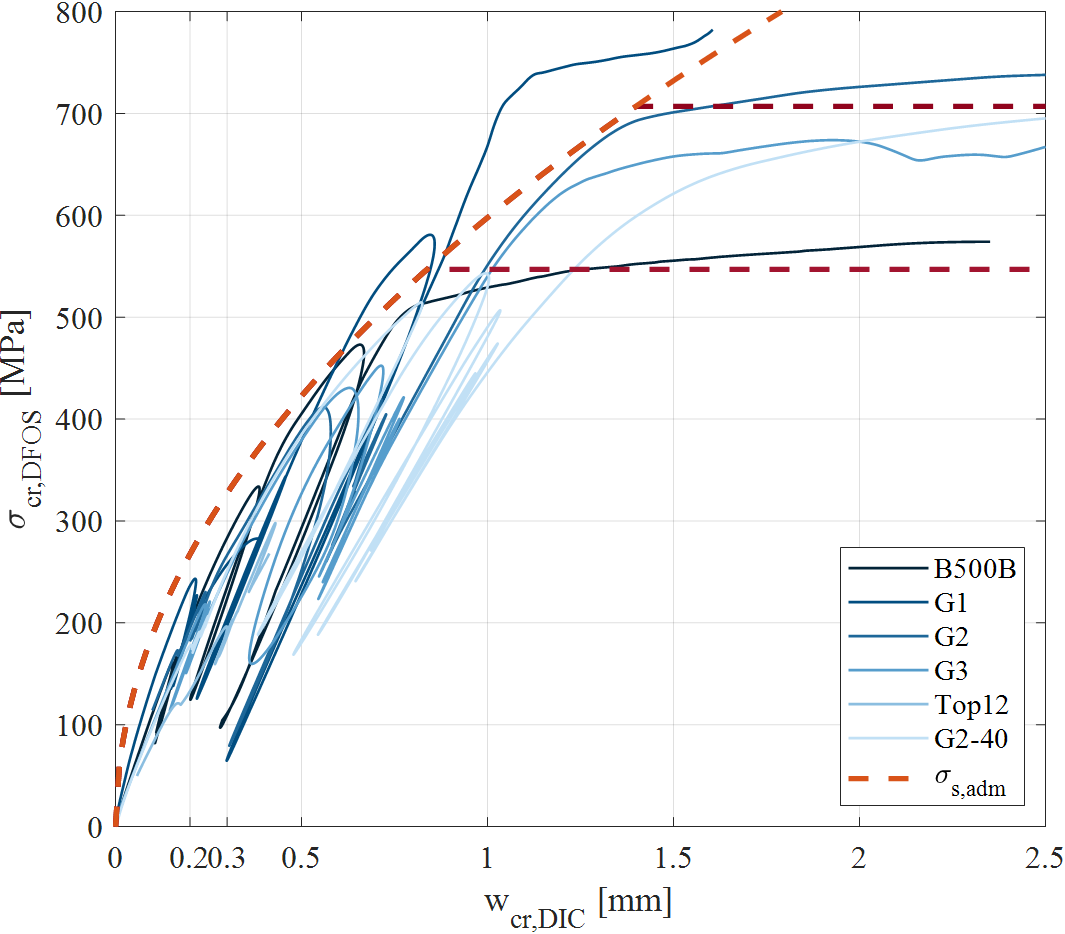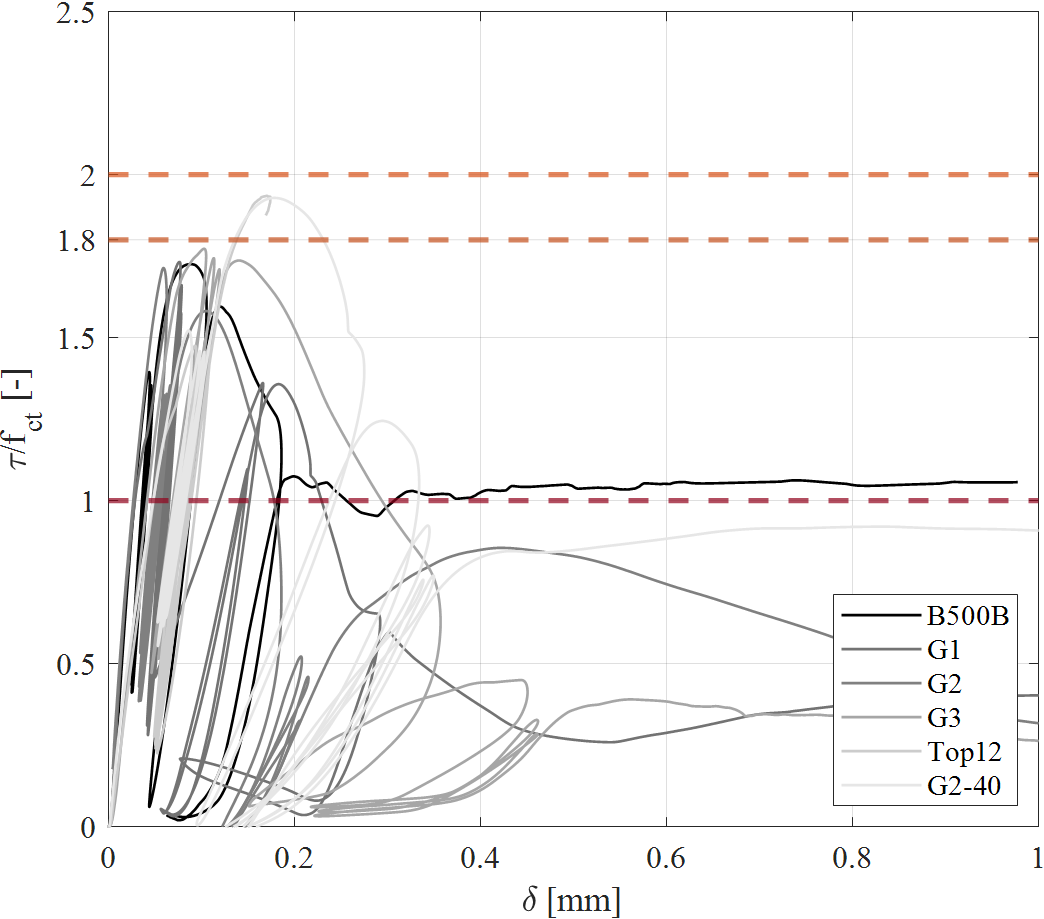Influence of the relative rib area on the serviceability of reinforced concrete
Author: Luisa Albertini
Language: English
Abstract
In the serviceability limit state, design codes for reinforced concrete define requirements for crack control. The resulting limitations of the crack width and steel stress at the crack lead to reinforcement ratios that are not needed in the ultimate limit state. The bond stress seems to be a promising parameter to influence the crack behaviour in serviceability. On the reinforcement side, the relative rib area is one of the parameters to control the bond behaviour. This thesis aims to investigate whether the variation of the relative rib area is a suitable parameter to influence the serviceability limit state. This could enable to account for a higher admissible steel stress at the crack and reduce steel usage.
The approach is to experimentally determine whether the relative rib area is suitable to influence the crack behaviour of reinforced concrete elements. Six four-point bending tests were performed on beams with five different reinforcements with varying rib heights and steel strengths. The lateral concrete surfaces of the specimens were instrumented with digital image correlation (DIC). The reinforcement was instrumented with distributed fibre optical sensing (DFOS).
The results indicate that the increased rib height did not lead to the expected increased steel stress at the cracks. The bond-slip relationship derived from the test results confirms that the bond stress was significantly lower than the values proposed by design standards. The higher ribs also caused a stronger branching of the cracks and a bigger variation of the results within the test.
The tests demonstrate that the increased rib height did not increase the bond shear stress. It is discussed that the higher, sharp-edged ribs induce more serious damage to the bond between the reinforcement and the concrete rather than increasing it. Comparisons to literature confirm that the influence of the rib area is small for bending tests without confinement.
In conclusion, for the investigation of the bond stress the level of confinement by transverse reinforcement should be considered. Finally, the high-resolution DFOS and DIC measurements have the potential to measure small-scale effects on the bond that enable a better understanding of the processes behind the simplified models used for practical design.


